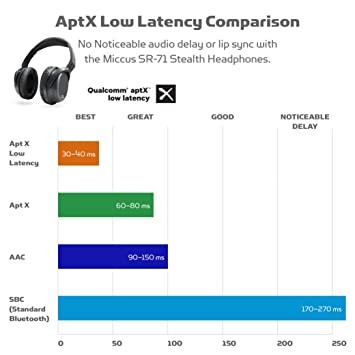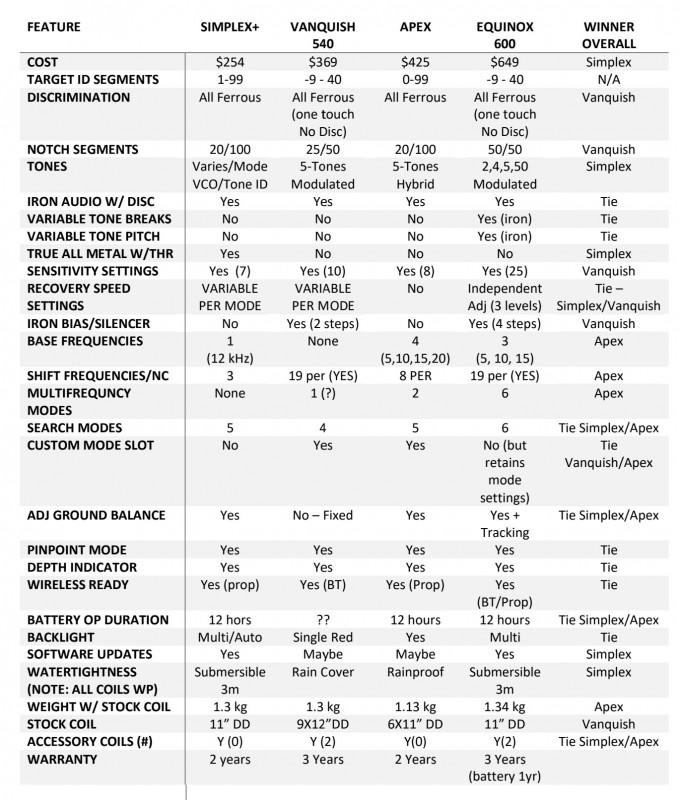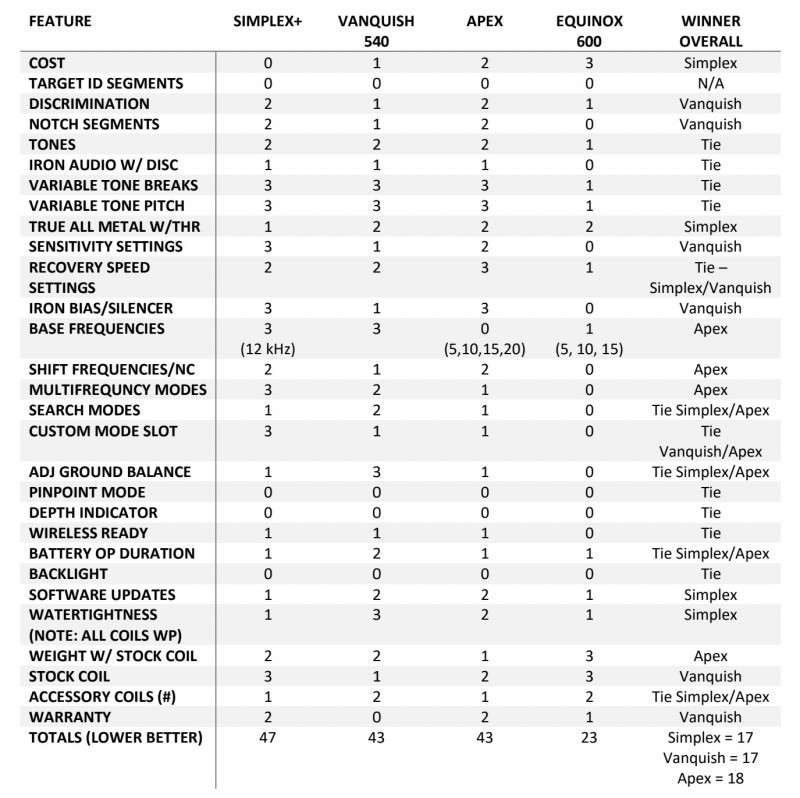-
Posts
6,119 -
Joined
-
Last visited
Content Type
Forums
Detector Prospector Home
Detector Database
Downloads
Everything posted by Chase Goldman
-
Anyone reading or posting in this thread, repeat after me, "My name is ______________, and I'm a coil-o-holic."
-

9” HF Round Versus 5” X 9” Elliptical
Chase Goldman replied to Steve Herschbach's topic in XP Metal Detectors
Well it's my truth, so I know that. But of course my hunting buddy would have a different opinion. And just like about anything metal detecting, ymmv. -

9” HF Round Versus 5” X 9” Elliptical
Chase Goldman replied to Steve Herschbach's topic in XP Metal Detectors
It can run at 13 - 14 khz for "general purpose" target hunting. I have hit old and deep silver with both Equinox and Deus. In fact, at my "old silver" site each machine has snagged me a seated quarter. Could it keep up? Depends on the park conditions (trashy or not) and the familiarity and experience of the detectorist with the idiosyncracies of each machine. If you primarily want deep silver, the x35 coil family is a better choice as it can run from just under 4 khz up to just above 25 khz. -

9” HF Round Versus 5” X 9” Elliptical
Chase Goldman replied to Steve Herschbach's topic in XP Metal Detectors
I have owned just about every XP coil variant except the 11x13 LF and X35 versions (too nose heavy and flexed the stock shaft from my brief swing of the beast). Almost exactly 3 years to the day I got my hands on a 9" HF round coil and I have never looked back. I have used to the 9.5" elliptical and one of my hunting buddies swears by it and has had great success with it including some great deep finds, but it never quite clicked with me. I like the 28 khz sweet spot on the coil and have done great with it at the beach, relic hunting, coin shooting, and contest hunting. It just feels right and I don't question whether I am getting sufficient depth like I do when I am using the elliptical. I sometimes use the 9.5" elliptical in tight swing situations, but that's about all. I don't think the depth delta between the two coils is that significant, especially in mineralized ground or when hunting micro targets, but the 9" round just feels right overall for me whether it is attached to the Deus or Orx. I know that is pretty subjective, but that's the truth. -
Exactly, sometimes there is a downside to being too responsive to the masses and you gotta realize you can't please everyone or you might back yourself into a corner where you can't please anyone. This latest update seems ridiculous.
-
I suppose that the APTX people would not be putting out incorrect information while at the same time trying to market their product. But I found the above chart to be in conflict with the one posted below. Specifically, if I read the above chart correctly, the time lag on APTX would range from 40 ms to 80 ms. But the chart below which was posted a couple of years back on the Equinox forum (I've included the link here btw) shows APTX from 60 ms to 80 ms (vs. 40 to 80 ms) and APTX-LL 30 - 40 ms. That extra 20 ms can make a huge difference. Presuming your are leisurely swinging the coil over 3 times its width over a target centered in the middle and it takes about .8 second to traverse that distance of say 3 feet. Then .070 seconds delay (70 ms average aptx delay) = 36 inches/.8 sec * (70/1000) sec is ~ 3 inches. In other words, your coil has traversed about 3 inches over the time it has taken to hit the target with coil until it actually reaches your ear. At APTX-ll average delays of 30 ms, that distance has narrowed to 1.3 inches. Not ideal, but better. SBC (regular bluetooth) is 220 ms and it is just unbearable with a swing error of almost 10 inches! Basically, every 20 ms delay results in a swing error of about 1 inch and gets worse the faster you swing the coil. Regular SBC bluetooth delay is unusable. APTX I have found to be annoying but if I had no other choice could deal with it. APTX-LL is pretty indistinguishable from real time from my experience. Minelab Wi-Stream proprietary wireless protocol delay is about 16 ms which I suppose is similar to Garrett's Z-Lynk wireless performance. Let us know how it goes with those APTX buds, Rick. Would like to know if they do better than the ones I have tested. Thanks!
-

Low Weighted Multi Vs 5/10 Khz To Avoid Tiny Targets
Chase Goldman replied to Argyris's topic in Minelab Equinox Forum
I hunt at a farm that has a lot of molten aluminum globs due to a tractor fire. They sound pretty good but "slightly" hollow. I am not going to sit here and tell you that I could really tell the difference between those globs of aluminum and the 160 year old brass and lead-backed cartridge box Eagle Breast Plate in the center of the picture below, but I did dial it in and knowingly bypassed some additional globs before I dug the Breast Plate which rang up high too, but did sound different due to its symmetry and metal mass. Also pictured is a crushed aluminum can and a nice "high ringing" rusted nut and bolt. -

Low Weighted Multi Vs 5/10 Khz To Avoid Tiny Targets
Chase Goldman replied to Argyris's topic in Minelab Equinox Forum
Thanks for weighing in Clive, you are one of the great experts on coil control and learning the language of the machine. Plus you DO have a few settings tricks up your sleeve too. But you are absolutely right, nothing substitutes for building the "brain muscle memory" of swinging the machine for hundreds of hours so it all clicks without having to think about it. Settings can help you get in the ballpark and help you learn but they can't instantly make you an expert. NO shortcuts. And no matter how experienced you are, you will still get fooled. But you feel less surprised when it happens because you have appropriately set your expectations from the 10-hour swing timer "I bet it's a ring" attitude to the 200 hour swing timer "I'm pretty sure I'm digging a tab" attitude - and the surprises are then usually good surprises. -

Okay Garrett I Know It’s Got To Be A Video
Chase Goldman replied to Ridge Runner's topic in Garrett Metal Detectors
OK now I'm totally confused. I give up with trying to decipher what Chuck is trying to say... Can't be reading the entire forum trying to look fo his "clues". Fun for some, I guess... Update: Had my morning coffee - now I'm feeling better and Chuck Proof. Good luck with that Equinox. I hear it is a good machine, Chuck... Didya get that 6" coil you always wanted, too? -

Okay Garrett I Know It’s Got To Be A Video
Chase Goldman replied to Ridge Runner's topic in Garrett Metal Detectors
I think you mistook my question, which was a legit question. And it looks like you sort of answered it, Chuck, but still you like to use riddles. I was asking if you were getting an Apex (test unit ) and it looks like that is the case. Congrats. Oh and congrats on detecting longer than me. Not much of an accomplishment though. I was a late bloomer. -

Do You Think We Will Ever See More Coils For The Equinox
Chase Goldman replied to Rick N. MI's topic in Minelab Equinox Forum
I basically considered it a slap in the face of Equinox customers when they went out of their way to use a different connector on the Vanquish coils to ensure they could not be used on the Equinox. Really a craptastic move by ML IMO. So you tell me whether that makes sense or not? -
They are APTX but not APTX Low Latency like the Avantree's you originally posted, so you may suffer from some lag which can be annoying while swinging the coil over a target. See below. GL Customer questions & answers Q: Does anybody game with them? I haven't found any budget wireless ear buds for call of duty mobile that dont lag A: it will lag a little since it is not Aptx-ll only Aptx or SBC codecs which will have little lag. By IO Error on May 24, 2020
-

Okay Garrett I Know It’s Got To Be A Video
Chase Goldman replied to Ridge Runner's topic in Garrett Metal Detectors
??? This has something to do with Apex ??? -

Low Weighted Multi Vs 5/10 Khz To Avoid Tiny Targets
Chase Goldman replied to Argyris's topic in Minelab Equinox Forum
This is one of those situations where the audio of the Deus kind of helps sniff out the modern trash vs. a deep coin signal. Right tool for the job. That being said, I would really listen for audio nuances between an actual deep coin and the micro aluminum. Both may not give the most stable VDI but if you switch to 5 khz, to interrogate the target, once a signal is acquired in your search mode (e.g., beach 1 or 2), I bet the deep coin signal will lock in better than the micro aluminum. Try it. Remember, I reserve the user profile slot as my interrogation mode whether it is a single frequency mode or gold mode or just Field 1 vs. Field 2. -
Welcome Sean - Regarding powerline noise: If you suspect the power lines as being the noise source, then point your coil towards the power lines to make the noise as bad as possible and then run a noise cancel with your coil stationary in the air pointing at the source. If noise cance didn't work to improve the situation, then try lowering sensitivity. If you find you are lowering sensitivity too much to get rid of the chatter (5 or more points below the default of 20) then shift modes. Higher frequency weighted modes may handle the Electromagnetic Interference (EMI) better. If you get no joy there, then try going to single frequency. You may find a single frequency setting that lowers the chatter. Regarding, ground balancing, if you truly can't find a clear spot to do a ground balance, then not sure ground balancing is going to make much difference. You could try just setting GB to the default of zero and take your chances, or you can use the pinpoint mode to try to find that bare spot between targets to do the GB. If you simply just swing the detector in search mode with the horseshoe button engaged (no discrimination), it will probably sound like a machine gun going off with iron grunts because you are probably picking up ground noise at -9/-8 in addition to actual targets. The pinpoint mode will better tell you whether there is an actual target under your coil that might interfere with your GB routine. Unlike the motion modes, it is somewhat immune to ground noise as long as there isn't significant changes in the actual ground phase while swinging over the ground. Regarding sidewalks and curbs, yes you are going to get interference from the iron rebar in the cement sidewalks and curbs. Your best bet is to lower sensitivity and try to use the 6 inch coil if you are trying to detect the edges. No point in banging your head against the wall if it is driving you crazy, turn down the sensitivity as necessary and look for shallow keepers. HTH HH
-

Low Weighted Multi Vs 5/10 Khz To Avoid Tiny Targets
Chase Goldman replied to Argyris's topic in Minelab Equinox Forum
Welcome to the forum Argyris. You may know me also as vferrari from other forums. Some notes on single frequency: When you go to single frequency, the mode's Multi IQ personality pretty much disappears. Iron Bias becomes non-operational, ground balance, compensation, and tracking are more "traditional" single-frequency-based, losing some of the advantage of Multi IQ, multi-frequency compensation for salt, for example which is why beach mode does not "allow" single frequency. The only vestige of the original mode are the manual settings for discrimination/notch, tone customizations, and recovery speed settings. This means that no matter what mode you initiate single frequency from, all you have to worry about are the manual user settings (recovery speed and tone customizations), tone bin breakpoints, and discrimination settings you desire. Therefore, consider using single frequency more as a target interrogation tool rather than as a mode you would normally search with unless EMI issues are forcing you there or you are targeting specific target types, Your are not really going to lose much in the way of TID stability if the target is a keeper (i.e., gold or hammered silver), but you may lose stability on the aluminum which would be a dead giveaway. That is why I recommend that you use single frequency primarily as a target interrogation tool better characterize aluminum targets. Your other "tool" for characterizing micro targets is to use the built-in pinpoint moder which is very good at giving you a mental picture of the target footprint. You can practice using the pinpoint mode to differentiate between micro targets vs. rings and coins. You will notice a difference and can make your decision whether to dig for the target. On the beach, I just scoop the target regardless. In dry sand, I let the scoop "filter" the target. Micro targets will spill out and if I am not in a mood to look for earring backs or studs, just let it go if it manages to filter through the scoop but will flatten the dump out with my foot just to make sure I don't pick up a visual on bright metal. In wet sand, similarly, I dump the scoop on the surface and flatten it out and run the coil over the dump and see if I am getting a target of significant diameter, otherwise move on. Gold mode is another useful tool off the beach to give you an idea of whether you are going after a micro target because it has motion-based VCO-like pitch audio. So the intensity and "duration" of the target audio signal gives you clues as well. Can't use gold mode in wet salt sand, though, too unstable. Finally, you can also try to "filter" and interrogate using sensitivity, which is theoretically possible if the target is in-situ because the deeper micro targets should disappear fairly quickly. I have not really tried doing this. For land hunting, I would go ahead and use either Park 1 or Field 1 which should filter most micro jewelry and use single frequency to interrogate suspect micro targets. For the beach, use the beach modes for stability and the pinpoint mode. Single frequency might be too unstable on wet salt sand for interrogation. Finally, if you are on land/beach, have taken a plug/scoop because the interrogation techniques have , and are using your handheld pinpointer but cannot readily locate the target, then you have your answer. Move on, you don't have to get a visual on it to know for sure. Hope this helps. -
From a specs perspective, since they are APTX-LL you should be good to go.
-

Best Detector Values Under $500
Chase Goldman replied to Steve Herschbach's topic in Metal Detector Advice & Comparisons
-

Gold Indian Head, My Best Find Ever
Chase Goldman replied to dogodog's topic in Metal Detecting For Coins & Relics
Just a great find. Doesn't get any better than that.- 42 replies
-
- coin detecting
- gold found
-
(and 1 more)
Tagged with:
-
Yes, the lack of US QED dealers is also an impediment. Then I turn to the other great debate - the future direction/evolution of ML high-end prospecting machines primarily from an ergonomics aspect will it be son of GPX or son of GPZ or something altogether different or a hybrid or ??? (but hopefully lighter). But that is a discussion for another manufacturer's forum. I was really disappointed the Apex turned out to not be a slimmed down version of the ATX (but not in the least bit surprised, either - I hope the end of the line for Garrett PI's is not the ATX).
-
I am interested in this only from the standpoint that if it is a technical and financial success, accounting for it's niche application, it might enable a land-based gold and/or relic focused PI of a similar form factor to be spun off. I am looking for something that performs like a GPX (with similar iron rejection, ground balancing, and mineralized soil timings) but with the ergonomics of the AQ. The QED almost fits the bill but is a no go without iron rejection.
-
Great reply to Sid, Bash. Sid - a number of factors can result in an audio blip without numbers showing up including EMI, ground noise and anomalies (a patch of mineralized dirt), and micro targets or deep targets. Regarding the latter, if you can't readily get a repeatable audio signal then just move on. At this point, in learning your machine, just focus on digging the repeatable no brainer signals (trash and treasure) so you can train your brain on what good and trash targets sound like. Read Bash's links regarding how to combat the noise sources (in short, do a noise cancel, reduce sensitivity from the default 20 setting (these help with the "sparkiness" caused by electromagnetic noise sources - EMI), and if you find you are having to reduce sensitivity a lot (5 points or more) then consider changing modes or switch to a single frequency to see if you can make the noise go away, and properly ground balance to make ground noise that shows up as -8/-9 numbers go away). If you are still having issues, then repost with specific information such as mode you are using and sensitivity setting, whether there are power lines or a lot buildings nearby that may have wifi or other sources of electronic noise. Also, put your phone in airplane mode or place it in a pocket opposite from the detector's control panel (i.e., on the side your body opposite from where you swing the detector). Good luck.
-
Agree. i was joking around so much in my "rant", that I forgot to mention that from what I could see, Apex did sound clean and responsive. Great screen too. I could also see that iron volume worked while the ferrous range was discriminated out, similar to the AT series and also different than Equinox where you can only hear iron where you have eliminated discrimination in the ferrous bin. The way Minelab "compensates" for that lack of iron volume implementation is the ability to quickly remove all discrimination and also enabling audio blanking of the threshold for any discriminated targets. The Minelab approach is more suited to situations where you have discriminated or notched more than just the ferrous range. Whereas, the Garrett approach is more suited to the more typical discrimination setup where all or a portion of the ferrous range is discriminated. The waterproof version will likely have to accommodate the AT series custom waterproof headphone jack connector and a more robust sealed USB charge port, which will take up more real estate on the control module.






